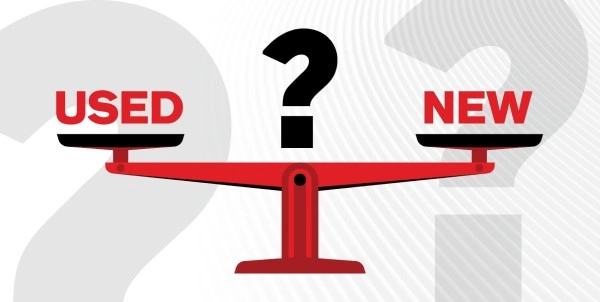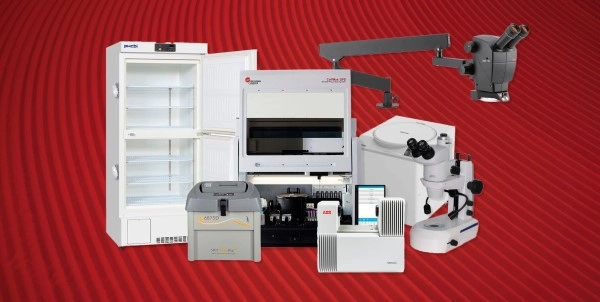A Guide to Buying Used Lab Equipment
What you need to consider before buying used lab equipment to make sure you get the best value
Whether you’re opening a new laboratory facility or maintaining an existing one, lab managers and technicians will frequently need to contend with the daunting prospect of purchasing lab equipment. When buying lab equipment, lab managers need to make sure they get the right tools for the job, stay on budget, and make a choice that supports a green lab environment. To that end, it may not be in your best interest to buy new, but rather to buy used lab equipment. Like anything, however, both options have a few pros and cons.
Pros and Cons of buying new vs. used
The major benefit to buying new equipment from the manufacturer is that it guarantees you will get the most up-to-date versions of whatever equipment you buy. Additionally, you will be able to purchase warranties on the equipment and there is a high level of confidence that the purchased item will be in excellent condition upon arrival. There are some downsides to this option, however, most notably the price. New equipment is expensive because it is in an unused condition and, often, state-of-the-art. Another concern is that just because something is the newest model, it doesn’t mean it’s the best fit for your lab and research. Unnecessary or unwanted features may have been added or desirable ones removed in comparison to earlier models. Finally, by buying new, you are contributing to the waste output of research labs instead of supporting a circular economy.
By comparison, buying used equipment not only helps limit waste but is also almost guaranteed to be much lower cost than new instruments. The main drawbacks of used equipment are the lack of a warranty and the lower level of confidence the buyer has that the equipment will function properly and be worth the price. This problem can be addressed within reason by taking a few precautions and doing some due diligence before buying.
What to consider when buying used lab equipment
Before buying any used equipment, the first step is to carefully consider your budget and needs. You want to make sure you have a clear understanding of what you can afford and a list of all features or performance capabilities your lab needs. This will equip you with the information you need to make the most informed choice about what used equipment is right for your lab. From here, the next most important element of buying used is to make sure the quality of what you are buying is worth the price.
The first step to ensuring quality is choosing a trustworthy supplier or marketplace. This can be harder than it sounds, as there are many suppliers selling used equipment. You should try to find suppliers or marketplaces with a good record of providing high-quality equipment. Take the time to check customer reviews, shipping and return policies, and references if possible. Suppliers that provide technical support and equipment certification are often more trustworthy. Once you’ve settled on a reliable vendor, the final step is to assess the equipment itself. Before purchasing, you should make the effort to ensure an in-person inspection of the equipment. If going in-person isn’t feasible, request current, detailed photos showing the equipment from every angle. Inspect the instrument for any signs of damage, corrosion, or wear and tear. Make sure you know going in what all the critical components of the equipment are so you can pay special attention to those elements when looking for any damage. To that end, it may be beneficial to consult with a qualified technician or third-party expert to help with the inspection and to best evaluate the instruments' condition.
In addition to assessing the current condition of used equipment, you should also ask for any maintenance or service records the supplier has. This can help you get a better understanding of the instrument's history. Additionally, by checking how well the equipment has been maintained, you can be more confident in the longevity of anything you buy. It is recommended that you also enquire about the usage history of the equipment to get a sense of what kind of damage or wear the instrument has sustained.
Used vs refurbished, what’s the difference
When searching for used equipment, you may also come across the term “refurbished.” While used and refurbished may seem like interchangeable terms, refurbished equipment can often indicate a higher level of quality, something that will likely be reflected in the price. Typically, refurbished means the machine has either had certain parts replaced with new ones, or it can also mean that elements with “memory”—such as electronic components or filters—have been wiped clean. When looking at a refurbished piece, make sure to ask for details regarding any replaced or upgraded parts. Sometimes, providers will also have details on testing specifications and even some degree of warranty. Regardless, make sure you get a clear sense of what makes a piece “refurbished” in the eyes of the vendor so you can better assess if the asking price is truly worth it.
 Why LabX is a trusted marketplace
Why LabX is a trusted marketplace
With a proven track record of quality and good faith, the LabX marketplace is a great place to start your journey when hunting for used or refurbished equipment. We provide a wide selection of top-brand-name equipment and can quickly connect buyers and sellers. Buyers are also able to check how long vendors have been on the LabX platform via the vendor’s seller page. LabX takes pains to ensure that all equipment sold on our site meets our terms and conditions, putting buyers in the best position to ensure they get the best option possible. Additionally, some sellers are tagged as “elite sellers,” marking them as being reputable suppliers and LabX provides a list of our most reputable, top featured resellers. The resellers list includes trusted groups like Gentech Scientific, REUZEit, and American Laboratory Trading, to name a few.
Interested buyers can search by brand, category, or application on LabX and can see all relevant listings from all sellers. Shoppers can connect with the seller directly through LabX’s listings as well as simplify their search with various filters for things like condition and price. In addition to used and refurbished equipment, LabX provides access to new instruments directly from the original equipment manufacturers and works with some of the biggest brand names in lab equipment.
Summary
Whether you’re looking to purchase new, used, or refurbished, it’s important to get the best deal based on what your lab needs now and in the future. While buying new does offer certain guarantees, that doesn’t always make it the best option. Sometimes, buying used is the right choice because of budget concerns, wanting to be part of a circular economy, or because you have a preferred version or brand that’s no longer sold by primary suppliers. When it comes to buying used or refurbished equipment, the most important thing to remember is that you are looking not just for a lower cost, but also for peace of mind that the purchase will see a return on investment and last as long as needed.
If you’re looking to purchase new or used lab equipment, be sure to register for LabX today. Keep track of your communications with sellers, shop with custom item recommendations, and receive exclusive offers in one place.










